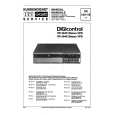|
|
|
Productos
|
|
Información
|
|
Destacado
|
|
|
 |
|
|
No hay comentarios de productos.
Operating Instructions - Refrigerators
1. STARTING: � The refrigerator is ready to operate as received when connected to the proper power supply. After starting, allow the refrigerator to operate for a few hours in empty condition. The unit will run continuously from one to several hours (depending on room, temperature) before final operating temperature is reached. It will then start and stop at fairly regular intervals. � When storing food do remember that the door shelf temperatures are slightly higher than the interior shelf tempera tures. The coldest temperature in the refrigerator is found on the top shelf. � When loading the shelves, do not block the air passage by stacking food packages tightly. Leave some room between packages to allow the cold air to drop to the lower shelves. 2. TEMPERATURE CONTROL: � Turning the control knob to the right (clockwise) will lower the temperature of the refrigerator. Turning the control knob to the left (counter clockwise) will raise the temperature. When the knob is turned to the extreme left it will switch off the power to the unit (defrost). 3. DEFROSTING: � Frost will accumulate on the freezer section of the refrigerator due to the freezing of moist air entering the refrigerator when the door is opened. The higher the outside relative humidity and the more numerous the door openings, the quicker the frost will build up. Excessive frost accumulation on the freezer compartment will reduce the operating efficiency and it may even break the drip tray by bridging. For defrosting turn the thermostat control to the extreme left (counter clockwise) position and keep the doors open. The defrost cycle could be accelerated by placing a pan of hot water in the freezer compartment. 4. MAINTENANCE OF REFRIGERATOR: � For cleaning of plastic parts (food liner, door liner, etc.) the use of soap and water only is recommended. Some detergents and cleaning agents may weaken the strength of the plastic.
WARNING
To avoid electrical shock which can cause severe personal injury or death, disconnect power to appliance before cleaning. After cleaning reconnect power.
CAUTION
To avoid personal injury or property damage, observe the following: � Read and follow manufacturer's directions for all cleaning products. � Do not place buckets, shelves or accessories in dishwashers. Cracking or warping of accessories may result.
Refrigerator Cleaning Chart
PART Textured Doors and Cabinet Interior DO NOT USE
USE Use 4 tablespoons of baking soda dissolved in 1 quart (1 liter) warm soapy water. Rinse surfaces with clean warm water and dry immediately to avoid water spots.
Abrasive or harsh cleaners Ammonia Chlorine bleach Concentrated detergents or solvents Metal or plastic-textured scouring pads. Abrasive or harsh cleaners Ammonia Chlorine bleach Concentrated detergents or solvents Metal or plastic-textured scouring pads Vinegar-based products Citrus-based cleaners. Abrasive or harsh cleaners Metal or plastic-textured scouring pads. A dishwasher.
Doors and Exterior IMPORTANT: Damage to finish due to improper use of cleaning products or non-recommended products is not covered under this product�s warranty.
Use warm, soapy water and a soft, clean cloth or sponge. Rinse surfaces with clean warm water and dry immediately to avoid water spots.
Door Gaskets
Use warm, soapy water and a soft, clean cloth or sponge. Follow removal and installation instructions from appropriate feature section. Allow accessories to adjust to room temperature. Dilute mild detergent and use a soft clean cloth or sponge for cleaning. Use a plastic bristle brush to get into crevices. Rinse surfaces with clean warm water. Dry glass and clear items immediately to avoid spots.
Accessories Shelves, buckets, drawers, etc.
|
|
 |
> |
|



